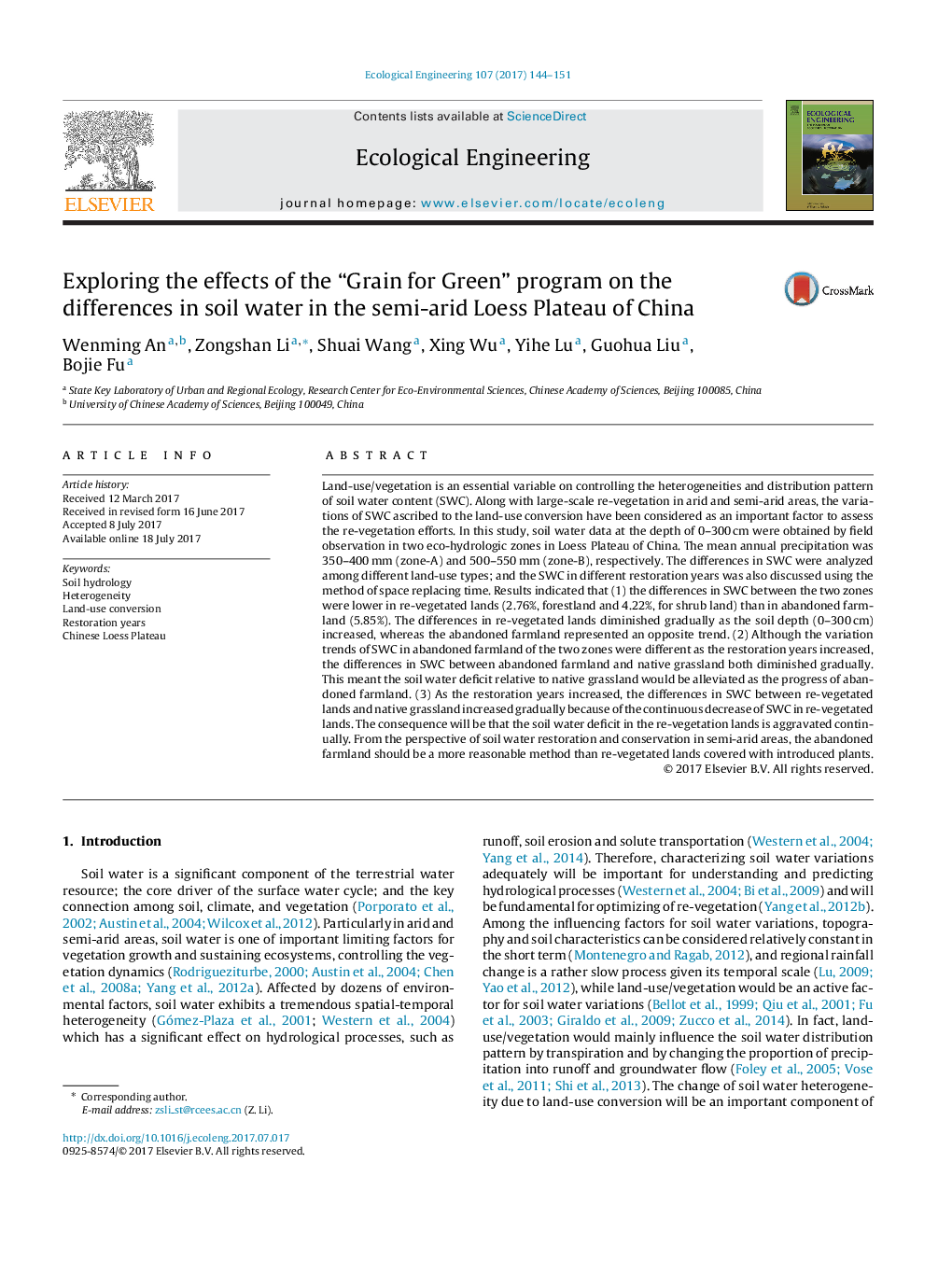| Article ID | Journal | Published Year | Pages | File Type |
|---|---|---|---|---|
| 5743669 | Ecological Engineering | 2017 | 8 Pages |
â¢Soil water differences were analyzed among different land-use types.â¢Soil water content was compared in eco-hydrological zones of the Loess Plateau.â¢Soil water had certain variation trends as the restoration years increased.â¢Soil water differences had a certain change as the progress of re-vegetated lands.â¢Afforestation would lead to continuous soil water deficit in semi-arid areas.
Land-use/vegetation is an essential variable on controlling the heterogeneities and distribution pattern of soil water content (SWC). Along with large-scale re-vegetation in arid and semi-arid areas, the variations of SWC ascribed to the land-use conversion have been considered as an important factor to assess the re-vegetation efforts. In this study, soil water data at the depth of 0-300Â cm were obtained by field observation in two eco-hydrologic zones in Loess Plateau of China. The mean annual precipitation was 350-400Â mm (zone-A) and 500-550Â mm (zone-B), respectively. The differences in SWC were analyzed among different land-use types; and the SWC in different restoration years was also discussed using the method of space replacing time. Results indicated that (1) the differences in SWC between the two zones were lower in re-vegetated lands (2.76%, forestland and 4.22%, for shrub land) than in abandoned farmland (5.85%). The differences in re-vegetated lands diminished gradually as the soil depth (0-300Â cm) increased, whereas the abandoned farmland represented an opposite trend. (2) Although the variation trends of SWC in abandoned farmland of the two zones were different as the restoration years increased, the differences in SWC between abandoned farmland and native grassland both diminished gradually. This meant the soil water deficit relative to native grassland would be alleviated as the progress of abandoned farmland. (3) As the restoration years increased, the differences in SWC between re-vegetated lands and native grassland increased gradually because of the continuous decrease of SWC in re-vegetated lands. The consequence will be that the soil water deficit in the re-vegetation lands is aggravated continually. From the perspective of soil water restoration and conservation in semi-arid areas, the abandoned farmland should be a more reasonable method than re-vegetated lands covered with introduced plants.
